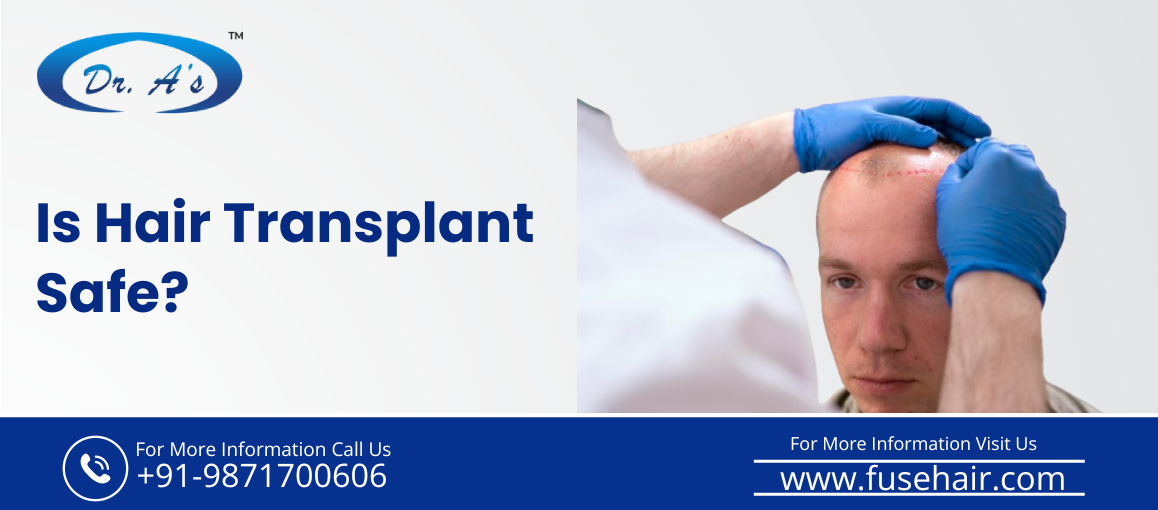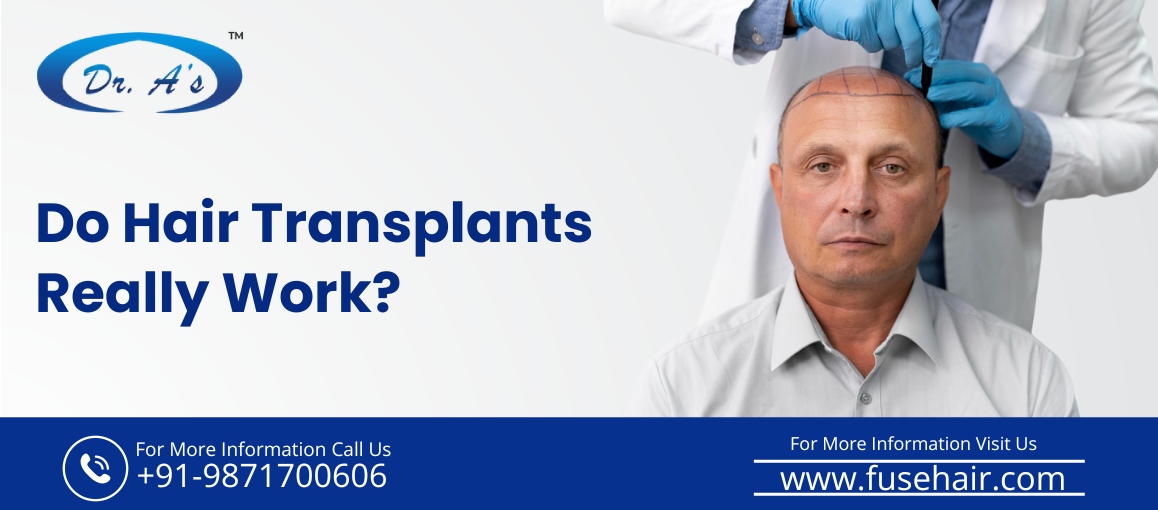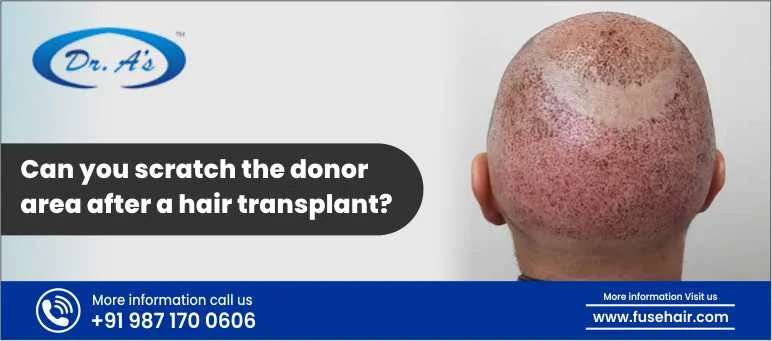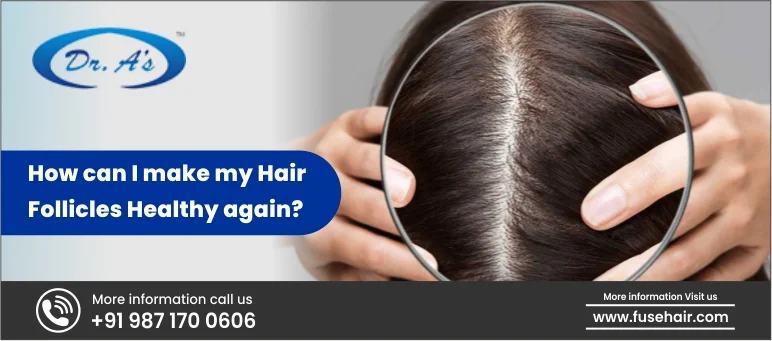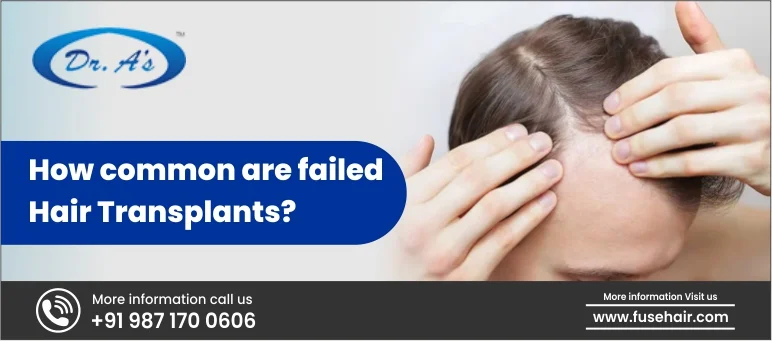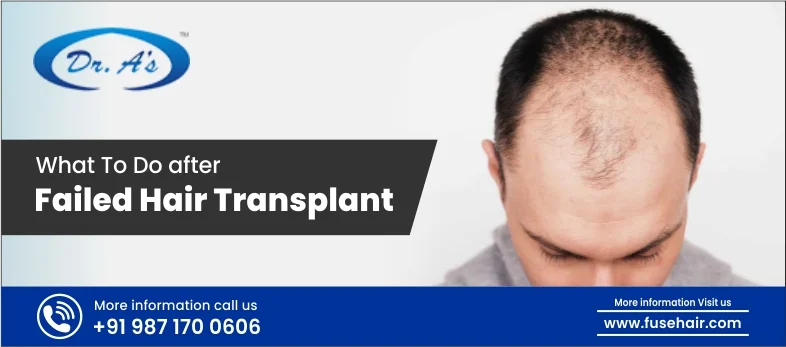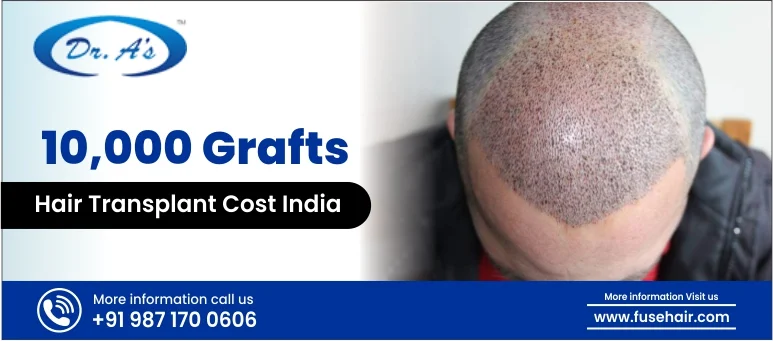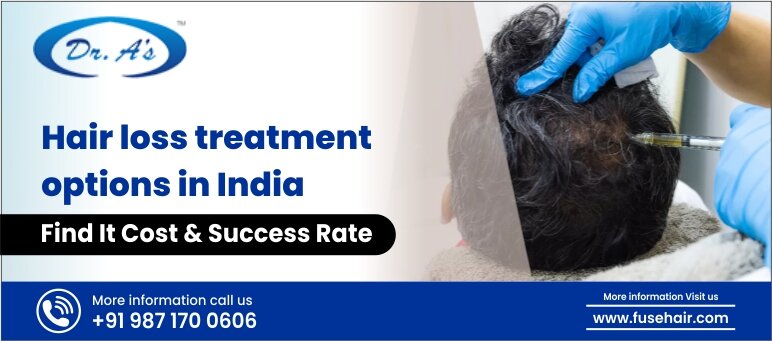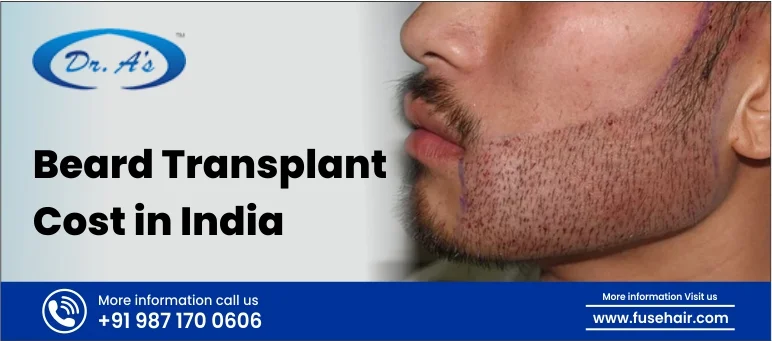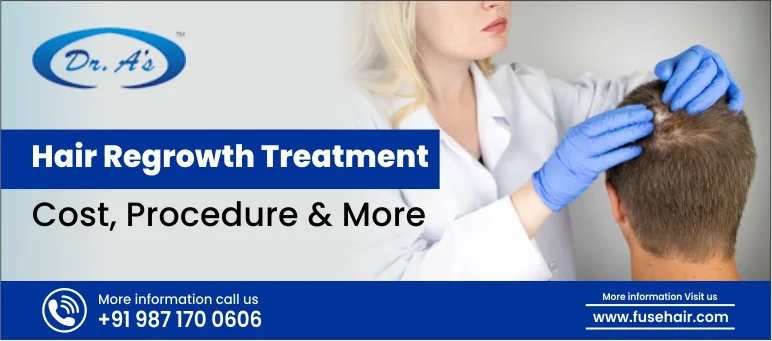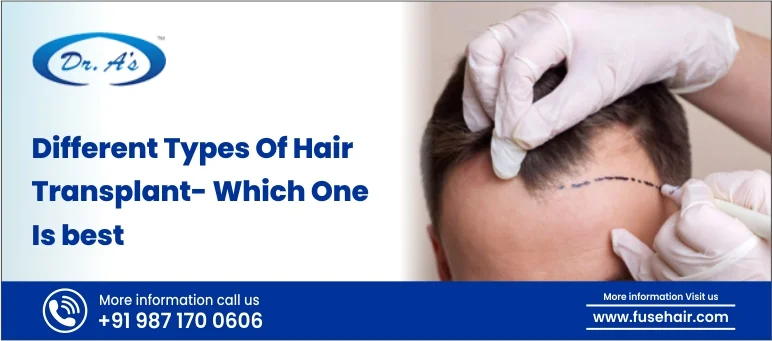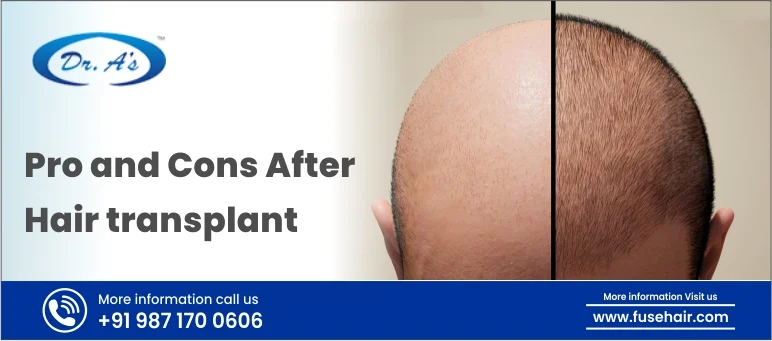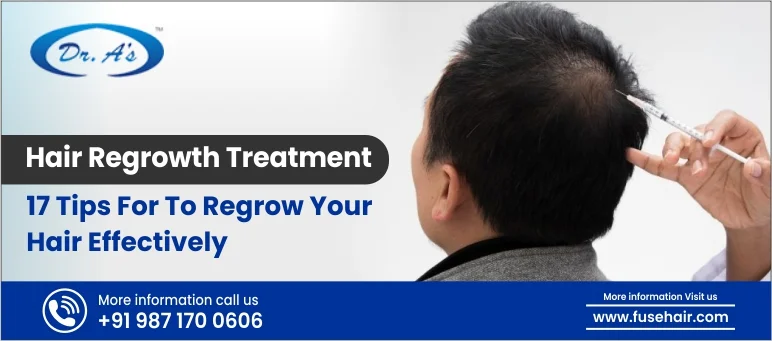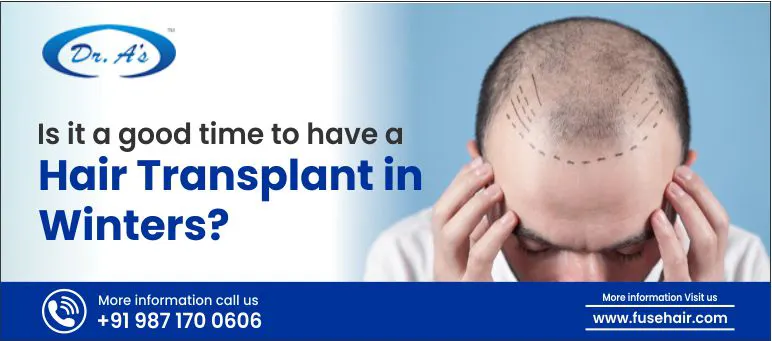
A hair transplant can transform lives, offering renewed confidence and a youthful appearance. Yet, not every procedure meets expectations, leading to frustration and disappointment. If your hair transplant has failed, addressing the problem promptly is crucial. Whether it’s uneven hair growth, unnatural-looking hairlines, or other concerns, taking corrective steps can make a significant difference.
Dr. A’s Clinic, recognized for the best hair transplant in Delhi, specializes in evaluating and correcting failed transplants, ensuring patients achieve their desired results. This guide will explore the common reasons and signs of a failed hair transplant and provide actionable solutions to restore your hair and confidence.
Common Reasons for a Failed Hair Transplant
Identifying why a hair transplant may fail is crucial to avoid disappointing results. Here are some common reasons for a failed hair transplant:-
- Inexperienced Surgeon: Lack of expertise in handling hair transplant surgeries can result in poor graft placement and unnatural hair growth, leading to disappointing outcomes.
- Graft Rejection: Sometimes, the body rejects the transplanted grafts, causing them to fail, which may result in poor hair growth or complete loss of the transplanted hair.
- Poor Aftercare: Neglecting post-operative care can lead to infections, poor graft survival, and overall suboptimal results.
- Inadequate Donor Hair Quality: Weak or sparse donor hair can result in insufficient coverage, leading to unsatisfactory results.
- Poor Candidate Selection: Not all patients are suitable candidates, and improper evaluation can lead to ineffective transplants.
- Unanticipated Complexities: Unexpected medical complications or allergic reactions can negatively impact the success of the transplant.
Signs to Identify a Failed Hair Transplant
To identify a failed hair transplant, it’s essential to recognize specific signs that indicate the procedure didn’t yield the expected results. Here are the key indicators:
- Poor Hair Growth: Lack of noticeable new hair growth within 6-12 months post-transplant could suggest a failure.
- An Unnatural Hairline: If the hairline looks uneven or unnatural, it may indicate improper graft placement.
- Excessive Redness & Swelling: Persistent redness and swelling might signal complications like infection.
- Visible Scarring & Uneven Grafts Placement: Noticeable scarring or irregular grafts indicate the transplant wasn’t successful.
- Increased Hair-loss: Ongoing hair loss beyond the initial shedding phase is a red flag.
- Prolonged Inflammation & Pain: Continued discomfort and inflammation suggest potential issues with the transplant’s success.
What Can You Do To Fix It?
Hair transplants are a significant investment in both time and money, and the expectation is to achieve a natural, full head of hair. However, when a hair transplant doesn’t meet expectations, it can be frustrating. Fortunately, there are solutions to address these issues. Here’s what you can do to fix a failed hair transplant, ensuring you regain confidence and get the best results, especially if you are considering the best hair transplant in Delhi.
-
Seek Guidance from a Qualified Hair Transplant Specialist
The first step in addressing a failed hair transplant is to consult a qualified hair transplant specialist. Dr. Arvind Poswal at Dr. A’s Clinic, recognized as the “Father of Hair Transplants in India”, is a prime example of an expert who can assess the situation and recommend the most appropriate corrective action. With over 25 years of experience, Dr. Poswal’s expertise ensures that even the most complex cases can be effectively addressed. During your consultation, the specialist will analyze the reasons for the failure, whether it’s due to poor follicle quality, unnatural hairline design, or inadequate post-operative care, and develop a tailored plan for revision.
-
Consider a Follow-Up Hair Transplant
In some cases, a follow-up hair transplant may be necessary to achieve the desired density and coverage. This is particularly relevant if the initial procedure did not provide sufficient grafts or if the hair growth was sparse. Dr. A’s Clinic, known for performing the best hair transplant in Delhi, offers a range of advanced techniques to ensure a successful follow-up transplant:
- Revision Surgery: A revision surgery is often required to correct the errors from the first transplant. This might involve removing or relocating poorly placed grafts, adjusting the hairline, or adding density where needed. Dr. Arvind Poswal’s expertise in revision surgeries makes him a leading choice for those looking to correct past mistakes.
- Scalp Micropigmentation (SMP): SMP is a non-surgical solution that can complement a follow-up transplant. It involves tattooing tiny dots on the scalp to mimic the appearance of hair follicles. This technique is ideal for patients who want to create the illusion of a denser head of hair or to cover scars from previous surgeries.
- Platelet-Rich Plasma (PRP) Therapy: PRP therapy is a popular choice to enhance the results of a hair transplant. This involves injecting a concentration of platelets from your blood into the scalp to stimulate hair growth and improve follicle survival. PRP therapy can be particularly beneficial in areas where the first transplant showed poor growth.
-
Undergoing Proper Pre-Operative Consultations
Ensuring success in a hair transplant begins with thorough pre-operative consultations. Before undergoing any corrective procedure, it is crucial to have a detailed consultation with a specialist. At Dr. A’s Clinic, known for offering the best hair transplant in Delhi, the consultation process involves a comprehensive evaluation of your scalp condition, hair type, and the reasons behind the failure of the initial transplant.
This step is vital as it helps the surgeon tailor the corrective procedure to your specific needs, ensuring better results. Additionally, the consultation phase allows the patient to understand the risks, benefits, and expected outcomes, setting realistic expectations for the follow-up procedure.
-
Follow Recommended Aftercare Practices
Aftercare is a critical component of the hair transplant process and can significantly impact the outcome of both the initial and corrective procedures. At Dr. A’s Clinic, the aftercare guidelines are part of what makes it the best hair transplant in Delhi. Proper adherence to aftercare practices is essential to ensure that the transplanted follicles take root and grow effectively. Key aftercare practices include:
- Proper Hair Washing Techniques: It’s important to follow the surgeon’s instructions on how to wash your hair after the procedure. This usually involves using a gentle, non-irritating shampoo and avoiding vigorous rubbing or scratching of the scalp.
- Use of Recommended Medications: Post-operative care often involves the use of medications such as antibiotics to prevent infection and anti-inflammatory drugs to reduce swelling. Dr. A’s Clinic ensures that all patients receive a detailed aftercare plan, including medication usage, to support recovery and promote healthy hair growth.
- Avoiding Sun Exposure and Stress: Protecting your scalp from sun exposure is crucial in the weeks following the surgery. Wearing a hat or using sunscreen on the scalp can prevent damage to the newly transplanted hair follicles. Additionally, managing stress is important, as high stress levels can contribute to hair loss and negatively affect the results of the transplant.
- Regular Follow-Up Appointments: Consistent follow-up appointments with your surgeon are essential to monitor progress and address any concerns that may arise during the recovery process. These appointments allow the surgeon to assess hair growth, check for complications, and provide additional guidance as needed. Dr. A’s Clinic emphasizes the importance of follow-ups, contributing to its reputation as the best hair transplant in Delhi.
Conclusion
A failed hair transplant doesn’t have to be the end of your journey toward a full head of hair. By seeking the guidance of a qualified specialist like Dr. Arvind Poswal at Dr. A’s Clinic, you can explore various corrective options, from revision surgery to PRP therapy.
Proper pre-operative consultations and strict adherence to aftercare practices are also essential for achieving the desired results. With the right approach, you can rectify the issues of a failed transplant and enjoy the benefits of successful hair restoration, especially when trusting your care to the best hair transplant in Delhi.





























